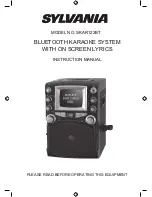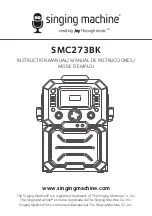
TM00358 Rev. A
Chapter 4 - Turret Aircraft Installation
L-3 WESCAM
October 2007
All Rights Reserved
77
8. Make sure the turret remains in the bottom of the case until it is either installed onto a service stand or
aircraft.
Inspecting the Interface Plate for Corrosion
1. Clean inside and around the mounting holes using a dry cloth.
2. Inspect inside and around the mounting holes for corrosion:
•
If no corrosion is detected, exit this procedure and proceed with installation.
•
If corrosion is detected, do not install the turret without written approval from L-3 Wescam and continue
with this procedure.
3. Take several digital photos of the corrosion.
4. E-mail the photos to L-3 Wescam Customer Service for review, and request written approval to proceed with
installation.
5. Await L-3 Wescam’s corrosion assessment and recommended course of action:
•
For minor corrosion, most cases, you will receive written approval to proceed with installation.
•
For severe corrosion, less common, you will receive written notice to take the turret out of operation and
prepare for repair.
4.3.2 Step 2 — Surface Preparation and Jointing Compound Application
All mounting surfaces and fasteners must be cleaned with a solvent before applying the CA 1000 joint compound.
Use a progressive cleaning procedure by cleaning one small area and wiping clean before the solvent dries. Apply
the CA 1000 joint compound after wiping so the part does not become re-contaminated.
Figure 4-5 Bolt Sealant Application Areas
Caution:
Never use reclaimed solvents or tissue paper, and only use cloths that conform to AMS 3819
standards.
Caution:
Avoid contaminating solvent by applying solvent to new, clean cloths only.
Caution:
Use CA 1000 only in application area or to protect worn nickel plating. The turret’s interface
plate and the aircraft’s mounting plate must provide a conductive path to electrically ground
out the turret.
Bolt Sealant
Application Area
B
C
D
E
F
Area A
















































